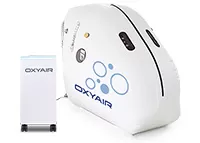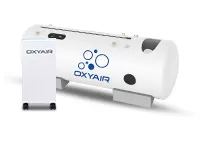Hyperbaric Oxygen Therapy FAQ: Everything You Need to Know
Introduction
Hyperbaric Oxygen Therapy (HBOT) is gaining attention as an innovative treatment for various medical conditions. However, many people still have questions about what it involves, its benefits, and whether it's safe. This blog post aims to answer the most common questions about HBOT to help you make informed decisions about your health.
What is Hyperbaric Oxygen Therapy?
Hyperbaric Oxygen Therapy involves breathing pure oxygen in a pressurized room or chamber. This process increases the amount of oxygen your blood can carry, which in turn promotes healing and fights infection. The treatment is conducted in a hyperbaric chamber, which can be a rigid or flexible structure that allows for high-pressure oxygen delivery.
How HBOT Works
Under normal conditions, oxygen is transported throughout the body by red blood cells. However, HBOT allows oxygen to dissolve directly into all of the body's fluids, including plasma, the central nervous system fluids, lymph, and bone. This helps deliver more oxygen to areas where circulation is diminished or blocked, such as in damaged tissues.
What Conditions Can HBOT Treat?
HBOT is used to treat a variety of medical conditions. Below are some of the most common:
Wound Healing
HBOT is particularly effective for chronic wounds, such as diabetic foot ulcers or pressure sores, by enhancing tissue repair and regeneration.
Infections
For severe infections like osteomyelitis (bone infection) and necrotizing fasciitis (flesh-eating disease), HBOT can help eliminate bacteria and improve antibiotic effectiveness.
Decompression Sickness
Also known as "the bends," this condition affects divers who ascend too quickly. HBOT is a standard treatment to reduce nitrogen bubbles in the blood.
Carbon Monoxide Poisoning
HBOT helps to quickly remove carbon monoxide from the bloodstream, thereby restoring the oxygen-carrying capacity of the blood.
Radiation Injuries
Patients who have undergone radiation therapy for cancer may suffer from radiation-induced injuries to tissues and organs. HBOT can help repair this damage.
Other Conditions
Anemia (severe blood loss)
Thermal burns
Traumatic brain injury
Multiple sclerosis
Autism (as a complementary treatment)
How Does the Treatment Process Work?
Understanding what to expect can help alleviate any anxiety you might have about HBOT.
Before the Treatment
Consultation: You'll first have a consultation with a healthcare provider to determine if HBOT is appropriate for you.
Medical Evaluation: A thorough medical evaluation, including a review of your medical history and possibly some tests, will be conducted.
During the Treatment
Preparation: You'll need to remove any items that are not allowed in the chamber, such as electronics, lighters, and certain types of clothing.
Entering the Chamber: You will enter the chamber, which may be a single-person unit or a larger room that can treat multiple people at once.
Pressurization: The chamber will be slowly pressurized with pure oxygen. You might feel a sensation similar to what you experience during airplane takeoff.
Breathing Oxygen: You will breathe normally throughout the session, which typically lasts between 60 to 90 minutes.
After the Treatment
Decompression: The chamber will gradually return to normal atmospheric pressure.
Post-Session: You might feel lightheaded or tired, but these sensations usually pass quickly.
Is HBOT Safe?
Safety is a common concern for those considering HBOT. Overall, it is considered a safe procedure when performed correctly.
Safety Measures and Protocols
Qualified Supervision: HBOT should always be administered under the supervision of qualified medical professionals.
Equipment Checks: Regular maintenance and checks of the hyperbaric chambers ensure they are functioning properly.
Potential Side Effects
While HBOT is generally safe, there are some potential side effects, including:
Ear Pain: Due to pressure changes, some people experience ear discomfort.
Sinus Congestion: Similar to ear pain, pressure changes can cause sinus issues.
Oxygen Toxicity: Rarely, breathing pure oxygen for extended periods can lead to oxygen toxicity, affecting the central nervous system.
These side effects are usually mild and temporary. The medical team will monitor you closely to manage any adverse reactions.
Who Should Avoid HBOT?
While HBOT is beneficial for many, it is not suitable for everyone.
Contraindications and Risk Factors
Untreated Pneumothorax: A collapsed lung must be treated before undergoing HBOT.
Certain Chemotherapy Drugs: Some cancer treatments can interact negatively with HBOT.
Upper Respiratory Infections: Conditions like colds or sinus infections can make it difficult to equalize ear pressure.
High Fever: Should be managed before starting HBOT.
Special Considerations
Pregnancy: The safety of HB
OT for pregnant women has not been fully established, so it is generally advised to avoid the therapy unless absolutely necessary and under strict medical supervision.
Claustrophobia: Patients with severe claustrophobia may find it challenging to stay inside the chamber, although some facilities offer larger chambers to mitigate this issue.
How Effective is HBOT?
The effectiveness of HBOT can vary depending on the condition being treated and individual patient factors.
Scientific Evidence and Success Stories
Chronic Wounds: Numerous studies have shown significant improvement in the healing of chronic wounds, particularly diabetic foot ulcers, with HBOT.
Radiation Injuries: Research supports the use of HBOT for treating radiation-induced tissue damage, showing improvements in both symptoms and quality of life.
Decompression Sickness: HBOT is a well-established treatment for decompression sickness, with a high success rate in relieving symptoms and preventing complications.
Realistic Expectations
While HBOT can be highly effective, it is not a miracle cure. Results can vary, and in some cases, multiple sessions are required to achieve the desired outcomes. It's important to have realistic expectations and discuss these with your healthcare provider.
How to Prepare for an HBOT Session?
Proper preparation can enhance the effectiveness of your HBOT sessions and ensure your comfort.
Practical Tips for Patients
Clothing: Wear comfortable, loose-fitting clothing. Avoid wearing anything made of synthetic materials, as they can pose a fire risk in the oxygen-rich environment.
Hydration: Stay well-hydrated before your session, but avoid large meals or caffeine, which can exacerbate discomfort during pressurization.
Medications: Continue taking prescribed medications unless instructed otherwise by your doctor.
What to Bring and What to Avoid
Bring: A book or magazine (if allowed), a blanket for comfort, and any prescribed medical devices that are permitted inside the chamber.
Avoid: Electronic devices, flammable objects, and any personal care products like lotions or deodorants that contain petroleum.
Cost and Insurance Coverage
Understanding the financial aspects of HBOT is crucial for planning your treatment.
Overview of Treatment Costs
HBOT can be expensive, with costs ranging from $200 to $400 per session. The total cost will depend on the number of sessions required, which can vary based on the condition being treated.
Insurance and Financing Options
Insurance Coverage: Many insurance plans cover HBOT for FDA-approved indications, such as diabetic foot ulcers, radiation injuries, and carbon monoxide poisoning. However, coverage for off-label uses may be limited.
Financing Options: Some facilities offer financing plans or sliding scale fees based on income. It's advisable to check with the treatment center and your insurance provider to understand your coverage and out-of-pocket costs.
Conclusion
Hyperbaric Oxygen Therapy is a promising treatment option for a variety of medical conditions, offering benefits like enhanced wound healing and infection control. However, it's essential to understand the treatment process, potential risks, and costs involved. Always consult with a healthcare provider to determine if HBOT is right for you and to discuss any concerns you may have.
By addressing the common questions and providing detailed information, we hope this blog post has helped demystify HBOT and provided you with the knowledge needed to make informed decisions about your health. If you have any further questions or need personalized advice, don't hesitate to reach out to a medical professional.














